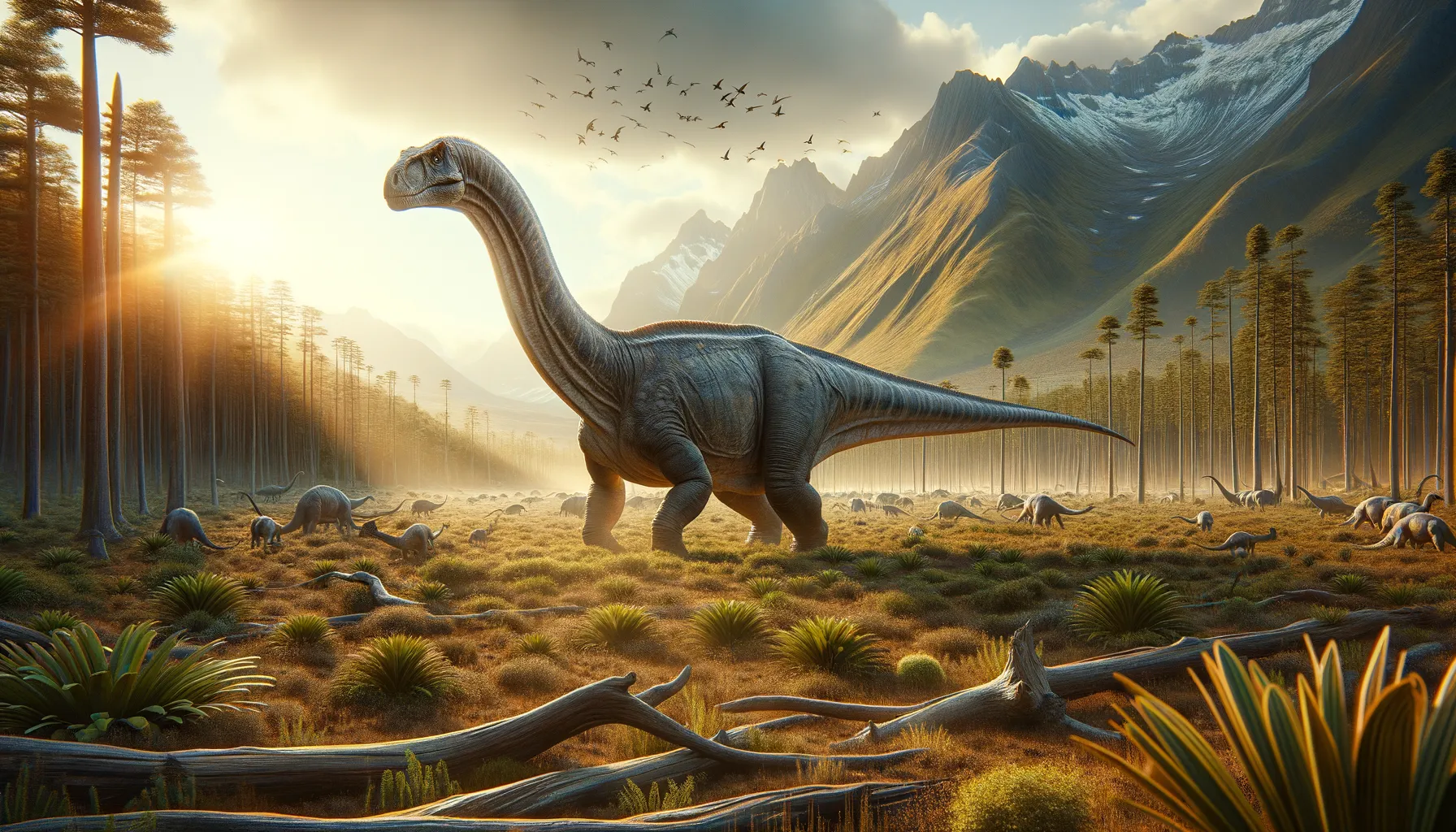
Helopus
A giant from the Cretaceous skies.
Period
Cretaceous
Length
Measured around 50 feet long.
Height
Stood about 15 feet tall at the shoulder.
Weight
Weighed about 20 tons.
Helopus was a large sauropod dinosaur known for its massive size and long neck. It roamed the Earth during the Cretaceous period, primarily in Asia. Its size provided defense against predators and allowed it access to high vegetation. Despite its size, Helopus was herbivorous and slow-moving, which helped in conserving energy. Fossils found in China have provided valuable insights into its structure and lifestyle.
Diet
Helopus was a herbivore, feeding primarily on the abundant plant life of its era. Its long neck allowed it to reach tall trees and shrubbery, giving it access to food sources that smaller herbivores could not reach. Its diet would have included a variety of leaves, ferns, and possibly fruit.
Hunting
As a herbivore, Helopus did not engage in hunting. Instead, it foraged for plant material such as leaves and branches using its long neck to reach food sources. Its large size ensured that it had few natural predators.
Environmental challenges
Helopus faced environmental challenges such as fluctuations in climate and vegetation. Being a large animal, it required vast quantities of food, making changes in flora significant threats to its survival. The presence of large predators likely influenced its grouping behavior to improve defense. Seasonal changes would have also dictated its migration patterns to optimize feeding opportunities.
Speed
Relatively slow-moving due to its heavy build.
Lifespan
Estimated to be around 70 to 100 years.
First discovery
Discovered in China in the early 1900s.
Fun Facts
- Helopus is known for its unusually long neck, which it likely used to reach high vegetation.
- This dinosaur lived during the Late Jurassic period, about 150 million years ago.
- Helopus was a type of sauropod, which means it belonged to the group of long-necked, herbivorous dinosaurs.
- The name Helopus means 'marsh-footed', suggesting it might have lived in wet areas like riverbanks or swamps.
- Fossils of Helopus have been found in China, indicating it was part of the Asian dinosaur fauna.
- Unlike some of its sauropod relatives, Helopus was relatively small, making it more agile than the giant sauropods.
- Helopus helps paleontologists understand more about the diversity and evolution of sauropods in Asia during the Jurassic period.
Growth and Development
Helopus followed a pattern of rapid growth during its early years, which was typical of large sauropods. This rapid development helped it reach sizes where it became less vulnerable to predators. As it matured, growth slowed but did not cease, contributing to its colossal size. Studies suggest that it reached maturity at around 20 years of age.
Habitat
Helopus lived in lush, forested areas that provided ample foliage for feeding. These regions had a warm climate and were rich in plant life, accommodating its dietary needs. Rivers and lakes likely dotted these landscapes, offering hydration and supporting the growth of diverse vegetation. Its habitat was part of a thriving ecosystem with various dinosaur species coexisting.
Interaction with other species
Being a herbivore, Helopus may have shared its habitat with other plant-eating dinosaurs, sometimes competing for the same resources. Its large size helped deter carnivorous dinosaurs; however, it likely engaged in mutualistic relationships with smaller animals that could groom it or alert it to danger. Fossils imply it was a communal species, possibly moving in groups for protection and efficient feeding.
Natural lifespan
Helopus had a natural lifespan of several decades, comparable to other large sauropods.
Reproduction
Helopus likely reproduced by laying eggs in nests constructed on the ground. Nesting sites would have been strategically chosen to maximize the safety of the eggs, possibly in secluded areas covered by vegetation. Young Helopus would have undergone rapid growth, gaining strength and size to reduce their vulnerability to predators. Parental care in sauropods is a subject of ongoing research, with possibilities ranging from some level of protection to complete independence after hatching.
Social behaviour
Helopus is believed to have been a social animal, likely moving in herds for added protection from predators and more efficient resource utilization. Herd dynamics would have played a crucial role in its survival, with larger and older individuals possibly leading and guiding younger members. Communication within the group could include vocalizations and body language to convey warnings or signal movement.
Fossil locations
Helopus fossils have primarily been found in China, with significant discoveries contributing to the understanding of its anatomy and behavior. Excavations in regions like the Gobi Desert have unearthed partial skeletons, offering insight into its structure and evolution. These fossil sites also offer clues about the environment it inhabited, aiding in reconstructing the ecosystem of the Cretaceous period.
